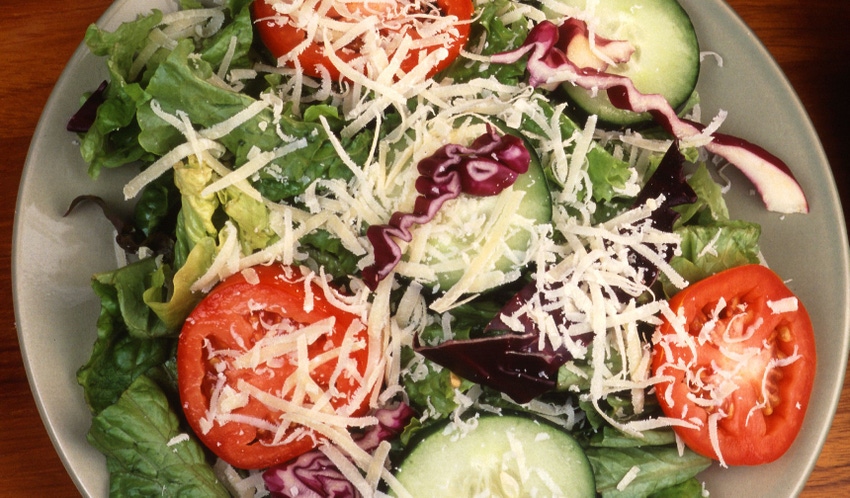
Coronavirus-related restaurant and school closures left some of the West’s vegetable growers unable to sell harvest-ready produce in 2020, and winter weather in the Midwest isn’t helping those growers recover.
The value of California’s utilized vegetable production last year dropped 0.9% to $7.68 billion compared to 2019’s value of $7.74 billion, according to the National Agricultural Statistics Service.
Arizona’s utilized production value took a nosedive, dropping from $1.6 billion two years ago to $1.15 billion in 2020, as the value of harvested lettuce in the state slid from $1.12 billion in 2019 to $725.22 million last year, the agency reports. Washington’s value dipped from $362.7 billion to $299.8 billion.
Other vegetable-growing states in the West saw increased value in 2020, including Oregon ($194.6 billion to $202.15 billion), Idaho ($65.8 billion to $68.3 billion) and Colorado ($18.5 billion to $28 billion), according to NASS. And some vegetables in California saw gains, such as broccoli, cantaloupe, sweet potatoes and tomatoes.
However, when sales to restaurants or other customers abruptly changed or ended last spring, farmers of many vegetables found themselves unable to sell some of their crops, the California Farm Bureau Federation notes. The pandemic lockdowns took effect near the end of the lettuce harvest season in the Yuma, Ariz., area, forcing some growers to disk their crops under.
“As a result of significant global disruptions, including lockdowns, closures and quarantines due to the COVID-19 pandemic, Fresh Del Monte Produce went through an unprecedented, turbulent period” last spring, company chairman and chief executive officer Mohammad Abu-Ghazaleh said while issuing a quarterly financial report last summer. He added the company’s liquidity and ability to generate positive cash-flows remained strong.
As restaurants slowly reopen and growers seek to recover financially, those in California’s Imperial Valley have encountered a new market glut caused by the deadly mid-February storms in the Midwest, South and East, where some stores were unable to refrigerate fresh produce because of power outages, the CFBF reported. Growers in the valley cut back on plantings this year, the organization added.
As of Feb. 19, a carton of iceberg lettuce from the Imperial and Coachella valleys was selling for $7.50 to $9.50, way down from the $24.85 to $27.65 the carton sold for in January 2020, the CFBF notes, citing USDA statistics.
California leads nation
Nationwide, the value of utilized production for 26 leading vegetable crops was $13.1 billion, down 4 percent from the previous year, NASS noted in its annual report. California leads the nation in vegetable production, accounting for 39% of total U.S. vegetable acreage.
Among the Golden State’s hardest hit crops were artichokes, which saw a 16% drop in value to $62.6 million even after a 12% drop in planted acres. Cabbage values dipped by 16% to $428 million; cauliflower saw a 25% dive to $346 million; celery shaved 24% of value to $359 million; onions dropped 12% to $878 million; and spinach receipts declined 28% to $439 million, according to NASS.
“In California, the largest producing state, the coastal regions experienced damaging cold temperatures in early spring, bringing (spinach) yields down below last year,” the agency stated. “Acreage decreased after some growers responded to a drop in demand by plowing under their fields.”
Leading gains in California were cantaloupes, whose value of $296 million was an increase of 24% from the previous year.
Here is a closer look at other Western states, according to NASS.
Arizona
The Grand Canyon State harvested 67,000 acres of lettuce, down only 6% from the 71,000 acres harvested in 2019, according to NASS’ Mountain Regional Field Office. Even so, the value of utilized lettuce dropped much more precipitously because of crop disease as well as the pandemic.
“Significant occurrences of crop disease also contributed to a tight market, prompting concerns of shortages in other parts of the country,” federal officials wrote. “Some producers in Arizona and California have allowed some head lettuce to die in the field or to be disked under, due to decreased sales to food service companies.”
Oregon
In the Beaver State, snap beans saw a decline of 26% to $20.6 million in value, and the $6.86 million paid for squash was down 15%. But sweet corn’s value in Oregon rose 8% to $41 million, onions gained 9% to $119 million, and the value of pumpkins soared by 78% to $16.8 million.
Washington
Carrot growers in the Evergreen State saw their crop’s value shaved by 24% to $22.5 million, while sweet corn’s value was down 14% to $73.9 million and onions lost 25% in value to $136 million. Green peas in the state also lost value, by 8% to $27.7 million.
However, Washington’s $32.3 million in asparagus sales in 2020 represented a 9% increase from the previous year. And pumpkins there also gained value, by 8% to $16.8 million.
Idaho
Onions in the Gem State were valued at $68.3 million last year, up 4% from 2019. The state joins Oregon and Washington to account for 56% of the national utilized production.
Colorado
Among the leaders, the value of utilized onion production increased to $28.02 million in 2020, from $18.53 million in 2019.
About the Author(s)
You May Also Like






